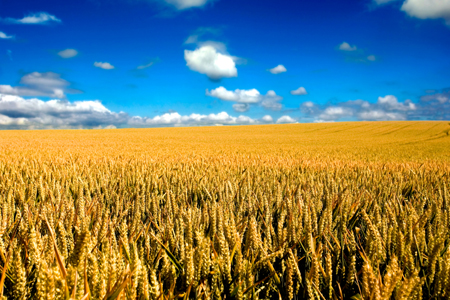Australia’s early wheat harvest shows lower protein, poor yields
Category: Grains
 (Reuters) – The early wheat harvest in Australia, the world’s second largest exporter, is showing lower protein scales and poor yields, analysts and traders said, heightening concerns over global grain supplies as shipments from top exporters dwindle.
(Reuters) – The early wheat harvest in Australia, the world’s second largest exporter, is showing lower protein scales and poor yields, analysts and traders said, heightening concerns over global grain supplies as shipments from top exporters dwindle.
Farmers are finding lower-than-expected protein scales in New South Wales and Queensland, the states responsible for producing top quality hard wheat, while a dry spring is resulting in a decline in yields across Western Australia.
“Given the hot and dry end to the season, we were expecting protein levels to be near the long-term average,” said Tom Howard, general manager at marketer Philp Brodie Grains.
“However, what we have seen so far is protein levels falling short of historic averages.”
Asia’s top buyers, who rely on Australia for the bulk of their milling wheat supplies, may be forced to import larger volumes of high-protein spring wheat from the United States and Canada, supporting global prices.
U.S. wheat futures have already climbed more than 30 percent this year as a devastating drought across the U.S. grain belt curbed yields and dryness hurt crops in Russia and Ukraine.
The U.S. Department of Agriculture forecast in a supply-demand report this month that world wheat stocks would drop 13 percent by the end of 2012/13 from a year ago for the lowest closing stocks in four years.
Last week, the International Grains Council cut its forecast for total grain stocks at the end of the 2012/13 season by 4 million tonnes to 328 million, representing a fall of 44 million tonnes, or 12 percent, from year-earlier levels.
In eastern Australia, where farmers have started harvesting their crop, protein content in Australian prime hard wheat is showing lower that the usual level of 13-14 percent.
“Quality is an issue, as per early reports from farmers,” said one cash trader in Sydney. “There is a lot of below 11 percent protein out there.”
Growing export demand has helped reverse this week what had been a historic discount between U.S. hard red spring wheat with 15 percent protein and the lower grades, trade sources said.
ASIAN BUYERS AND QUALITY GRAIN
China bought 295,000 tonnes of Canadian spring wheat earlier this month, Canadian industry sources have said, underscoring Asia’s rising appetite for high-protein North American grains.
Indonesia, Japan, South Korea and Malaysia rely heavily on Australia for supplies of milling wheat.
In Western Australia, where the harvest is less advanced, the protein quality of wheat committed has been better than last year but adverse weather conditions are likely to cause a significant fall in output, said David Capper, an operations manager for CBH Group.
The group, Western Australia’s main grain handler, has pegged wheat production at 5.5 million to 6.3 million tonnes, well below a record 11.73 million tonnes harvested last year.
The Australian government pegged production at 22.5 million tonnes in its most recent forecast in September, but analysts and traders believe it will be closer to 21 million.
East coast wheat got off to a good start amid good soil moisture following two consecutive La Nina weather patterns, which gave farmers favourable sub-soil moisture, and good rains in May and June provided timely topsoil moisture for planting.
However, analysts said weather at the end of the growing cycle across Queensland and New South Wales was unfavourable.
Dry weather has hurt Western Australian yields, with some parts of the state recording their lowest rainfall levels.
The harvest in Western Australian may suffer, with rains predicted at the end of the week, Capper said.
Weather conditions in New South Wales are more favourable, albeit with a small chance of rain on November 4, the Australian Bureau of Meteorology says. (Editing by Clarence Fernandez)




